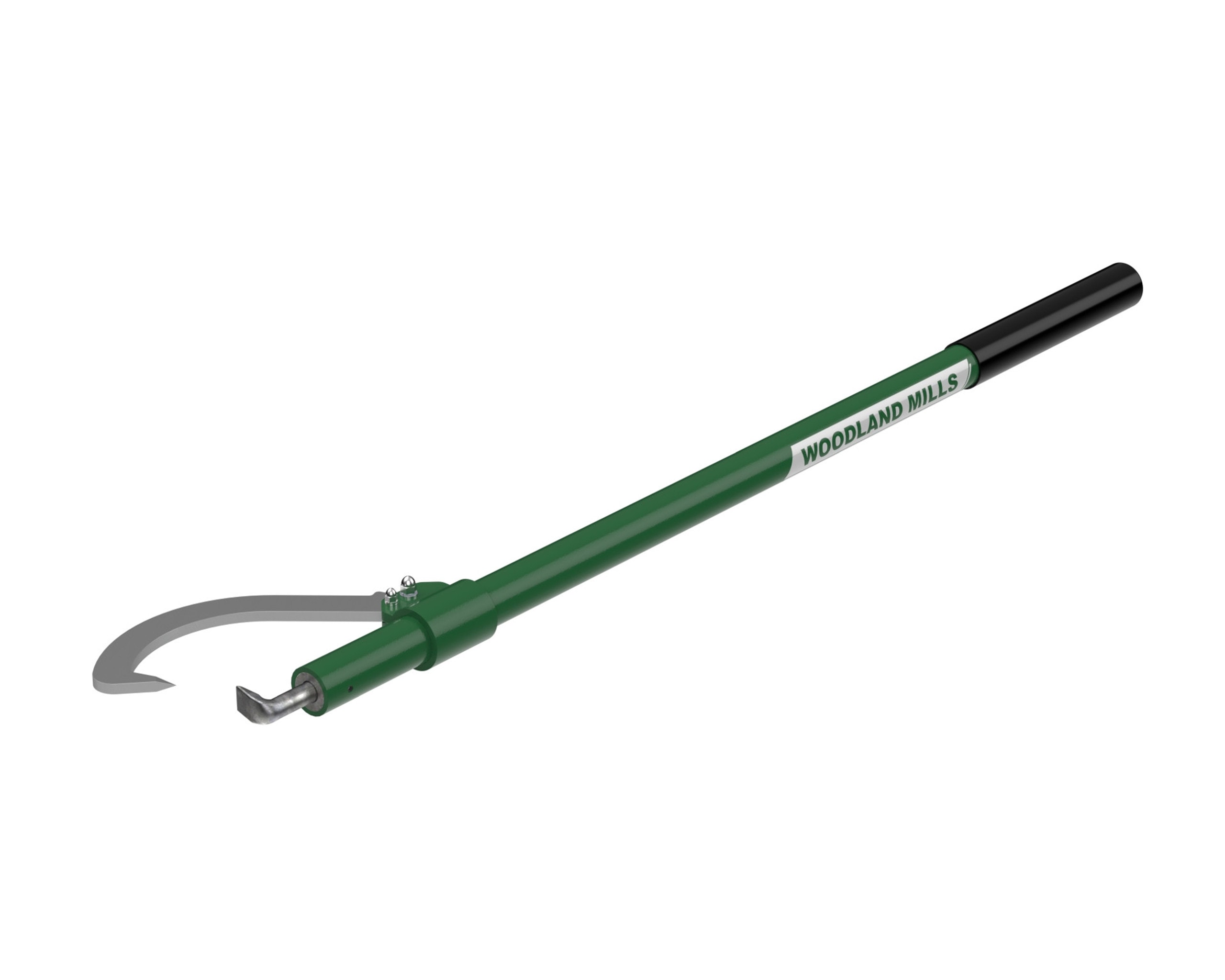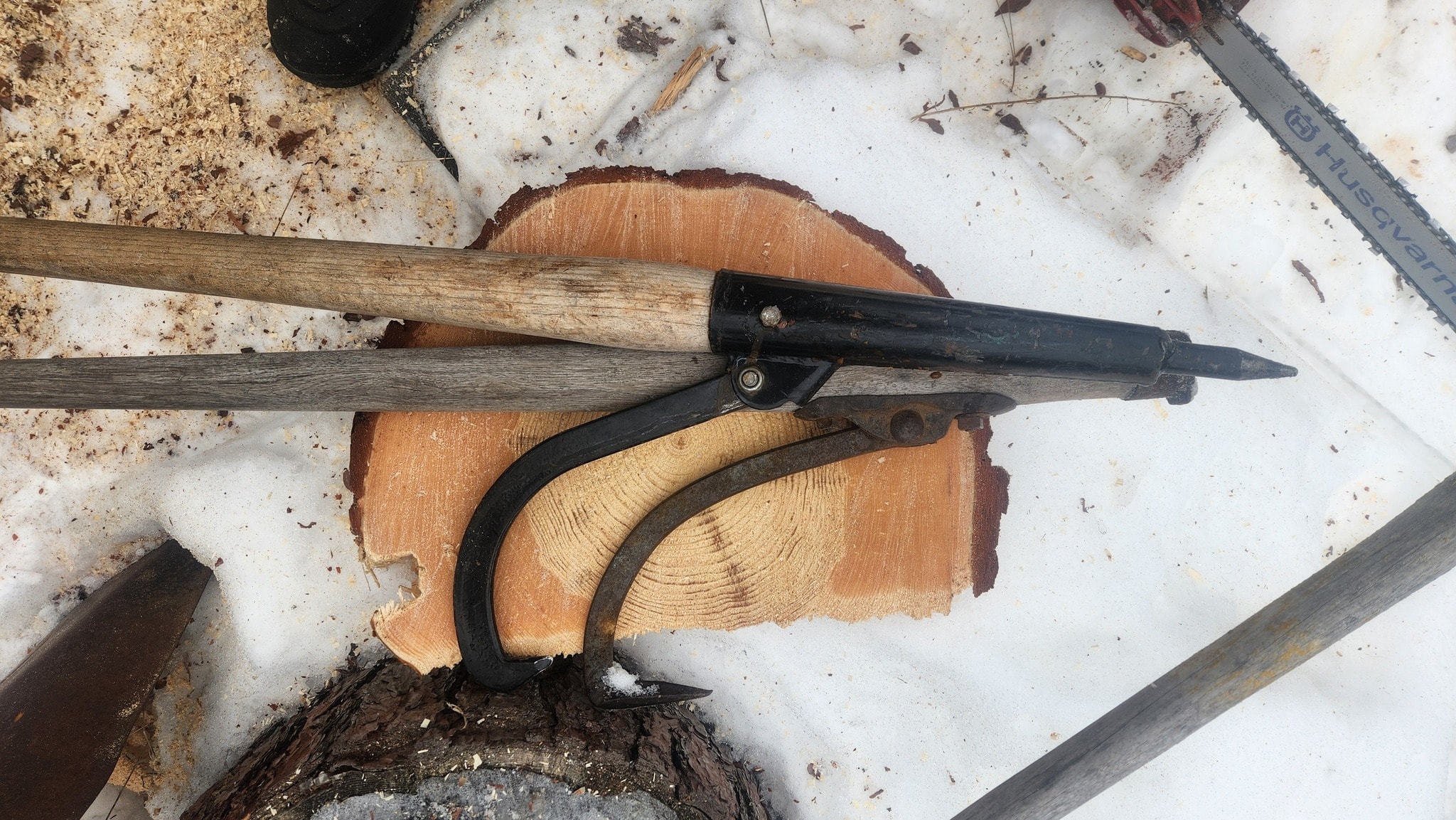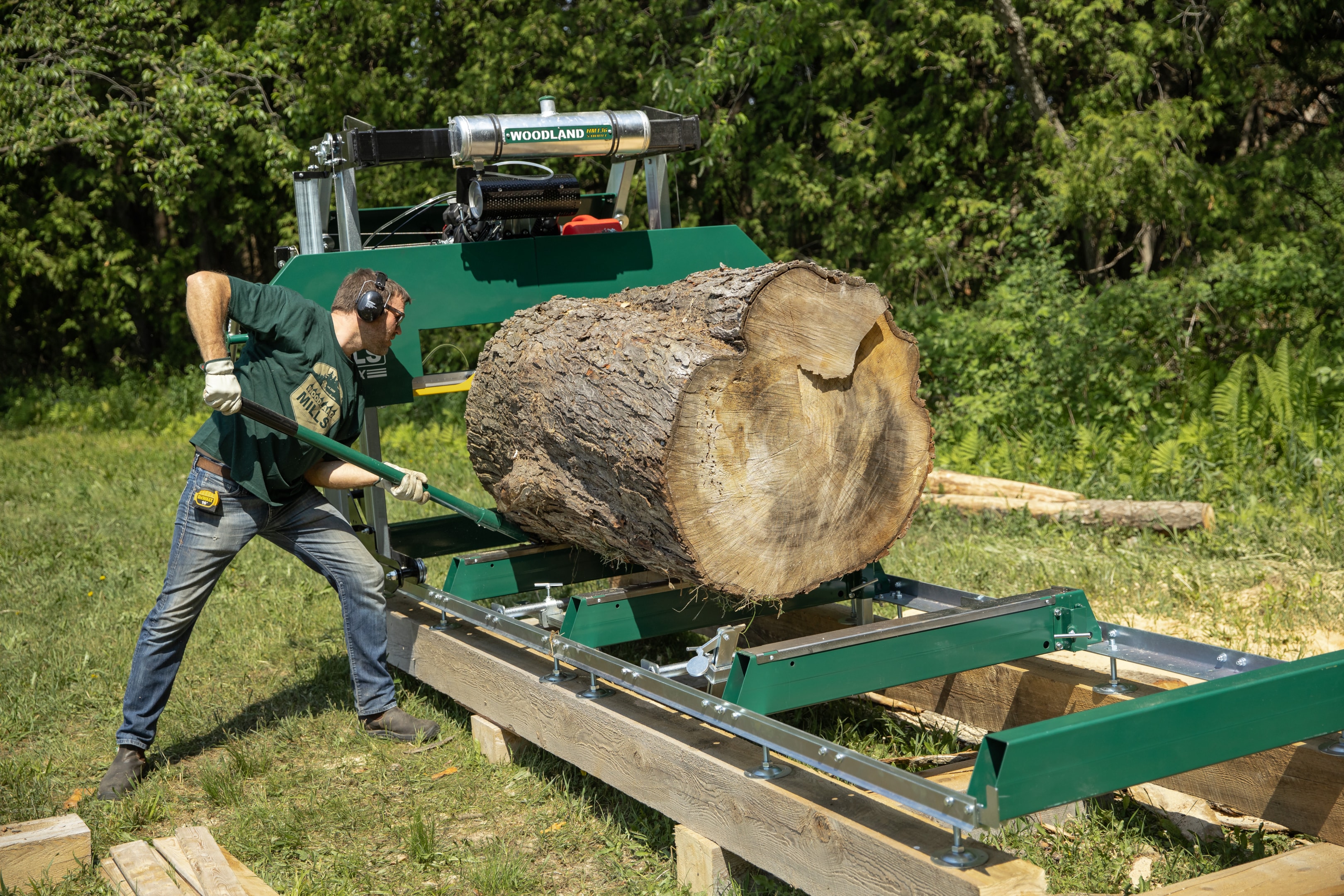Cant hook vs peavey: What's the difference?
How will you choose the best tool for rolling logs?
When moving logs there are a few tools which are staples of the industry and have been used for more than a hundred years.
Cant hooks and log peaveys are some of the most basic and useful hand tools you can use for turning logs. While they may look similar there are a few differences that set them apart.
While traditionally these tools may have had wood handles and cast iron parts, nowadays these tools benefit from modern engineering to make them more durable for your log rolling needs.
Let's get into it.

What is a cant hook?
Let's start with cant hooks, since log peaveys build off of the concept.
Cant hooks are a great tool for turning logs and have been used for more than 150 years. The components of a cant hook include:
-
-
A solid lever handle for gripping
-
A pivoting hook which hinges near the end of the handle
-
A blunt end, or an end with a lip, near the hook
-
How does a cant hook work?
There are a number of ways you can use a cant hook to roll logs. You can position the blunt end underneath the log, using the hook to get grip on the top side, and use your body as leverage to lift and move the log.
You can stand on the other side of the log bite the hook over top of the log to pull it towards you. You can place the blunt end over the log and push the hook underneath, granting you grip and leverage to move the log.
A blunt end makes it easier to pivot and rotate the tool when it's wedged beneath a log.
They are also effective at rotating your logs or cants while on the sawmill bed.
Cant hooks are all-in-one tools which can do everything when it comes to moving logs. For an easier time, having a log deck at equal height to your sawmill will make it even quicker to unload logs whenever you need them.

What is a log peavey?
A peavey is like a cant hook in many ways. Historically peaveys were used when rolling logs through rivers, and were helpful for separating tightly packed together logs.
Peaveys have:
-
-
A similar solid lever handle like a cant hook
-
A hook near one end
-
A straight point near the hook, providing two biting edges for logs
-
That point, sometimes referred to as a spike, can be useful in helping roll logs. A second biting edge can provide better grip for big logs.
How does a peavey work?
Like a cant hook, you position the tool as a lever to roll the log towards or away from you. However unlike a cant hook, the existence of a second biting edge means you can potentially have a better grip when rolling the log.
It could be more helpful for big logs where having a good quality grip on them is more helpful for rolling them.
You can also use the spike end for jamming into the ground, to help push or roll the logs from underneath.
One of the downsides to a peavey is if you press the spike-end of the peavey into the log, it's potentially damaging the log itself. This may not be a big deal, but if you want a live edge slab from your log you may need to account for this mark.

So what's the difference between cant hooks and peaveys?
While the two tools are very similar they have a different set of uses. You can get both as short handle or long handle tools, depending on what length you feel more comfortable handling.
They can also be made of wood, steel or other materials. It is up to your personal preference which one is better, but you may decide to pick a more durable material like aluminum, which is unlikely to break and need replacing.
Cant hook vs Peavey
Cant hooks:
-
-
Are better tools for small scale sawyers
-
Are great for rolling individual logs to a mill or staging area
-
Are handy for storing due to their small size and form factor
-
Peaveys:
-
-
Are better tools for medium-to-large scale commercial log operations
-
Are great for separating logs from each other
-
Roll larger logs better
-
However this is not necessarily universal. You can use a peavey for small scale operations and a cant hook for big timber rolling. Each tool has it's own benefits over the other, so when choosing to purchase and use one over the other, know that both are great log moving devices.
Both tools are effective at:
-
-
Moving logs from one place to another
-
Move logs without significantly damaging them
-
Move logs by yourself or without much help
-

So which one should you get?
Should you use a cant hook or a log peavey? Ultimately this is up to your personal preference.
Do you find it easier to push or pull a log with the leverage of a peavey? Then you should consider using that tool. The additional point at the end may help you to move your wood around your property more easily.
But the cant hook has a number of benefits too. The blunt end and short handle may make it easier to move smaller logs, such as wood you're moving to your portable sawmill or a processing machine to turn into firewood.
Choose the tool that is:
-
-
Most comfortable for you to use
-
Provides enough leverage for moving logs
-
Can push and pull logs
-
Makes it easier for you to move logs if you're by yourself
-
Woodland Mills also has cant hook lever accessories for its portable sawmill tracks, to more easily lift and move logs on and off your sawmill bed.
Take a look at your needs and see which tool is best for you.
SHOP SAWMILLS
HM122
The HM122 portable sawmill, packaged with the rugged Bushlander® trailer for complete mobility, loaded with features like the RapidChange® blade system, auto lube and more.
HM126
The sawyer favourite HM126 portable sawmill, packaged with the Woodlander® trailer for complete mobility, ideal operation height and easy storage.
HM130MAX®
The wide capacity HM130MAX® portable sawmill, packaged with the Woodlander® trailer for complete mobility, comfortable operation height and easy storage.
HM136MAX™
Our widest-capacity portable sawmill, the HM136MAX™, packaged with the Woodlander® trailer to make it easy to take anywhere and easy to store.
Join the Woodland Mills Community Facebook group. Search advice and insights from over 65,000 knowledgeable, supportive members.
- Pre-purchase considerations
- Sawmill set-up support
- Project inspiration photos and videos
- Community troubleshooting support
